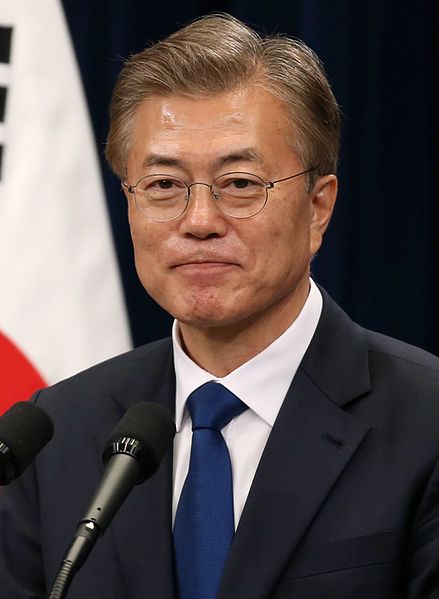
The coronavirus pandemic has altered societies around the world, including disruptions to elections. However, South Korea is pressing ahead with its parliamentary elections, and so far, it seems as though they will be successful. They are scheduled to occur on April 15, 2020, with all 300 members of the National Assembly being elected (Kim 2020). The government assures that all 44 million of its eligible voters will be safe to go to the polls, even as it urges the public to avoid large gatherings and practice social distancing (Sang-Hun 2020). South Korea is a model on how to bring the epidemic under control quickly and effectively, and other countries should also look to South Korea’s plan for conducting elections during this unprecedented time.
South Korea has had six constitutions since its formal establishment on August 15, 1948, switching between democratic and autocratic rule. However, since the establishment of the sixth republic in 1987, South Korea has been marked with democratic continuity and political stability (Croissant, n.d., 233). It has a parallel system, which is a mixed system in which voters are used to elect representatives through a List PR system and a plurality system (Reynolds, Reilly, and Ellis 2005, 104). In South Korea, 253 seats of the National Assembly are elected by a First Past the Post (FPTP) system and the remaining members come from a List PR system (Reynolds, Reilly, and Ellis 2005, 104). For a party to be able to represent its policies in the National Assembly, it must reach 3% on proportional contest, or more than 5 members of the part are elected from each of their FPTP election constituencies (“Korea’s Electoral System” 2014). Since the 2017 presidential elections, there has been two dominant political parties: the Democratic Party of Korea and the Liberty Korea Party. The significant minor parties include the Party for Democracy and Peace, the Bareun Party, and the Justice Party. The current president, Moon Jae-in was elected in 2017 as the candidate for the Democratic Party of Korea.
South Korean elections usually revolve around issues such as North Korea’s nuclear threat, the economy, and corruption (Sang-Hun 2020). Moon Jae-in was elected after the impeachment of Park Geun-hye after she was found guilty of abuse of power and coercion. Her impeachment follows a historical pattern of corruption in all six republics (Croissant, n.d., 258). Moon Jae-in’s presidency has also been hurt by similar scandals involving Mr. Moon’s closet allies as well as by a slowing economy and stalled diplomatic efforts with North Korea (Sang-Hun 2020). As a result, his approval rating has hovered around 41 percent, but has increased to 53 percent as a result of his government’s handling of the virus (Kim 2020).
This increase in approval rating reflects the belief by many Koreans that their government has handled the crisis well, especially as they see the epidemic spiraling out of control in other countries. In late February and early March, the number of COVID-19 cases has exploded to several thousands, and at the peak, medical workers identified 909 new cases in a single day (“How South Korea Flattened the Coronavirus Curve – The New York Times” n.d.). It seemed as though South Korea’s healthcare system was on the path to being overwhelmed, but less than a week later, the number of cases halved and continued to decrease at a rapid rate (“How South Korea Flattened the Coronavirus Curve – The New York Times” n.d.). South Korea stands as one of only two countries with large outbreaks who have managed to flatten the curve of new infections because of swift action, widespread testing and contact tracing, and critical support from citizens (“How South Korea Flattened the Coronavirus Curve – The New York Times” n.d.). Other leaders such as President Emmanuel Macron of France and Prime Minister Stefan Löfven of Sweden have called the South Korean president to request details of the country’s measures (“How South Korea Flattened the Coronavirus Curve – The New York Times” n.d.).
Thus, countries holding elections during this pandemic should also look to South Korea for instruction. Those who have been infected by COVID-19 were first given the choice to vote by mail between March 23rd and 28th (Sang-Hun 2020). Once this ended, elections officials in full protective suits opened special polling stations in the temporary shelters where patients and medical personnel have been held (Sang-Hun 2020). Those who ware healthy will go to one of the 14,000 polling stations wearing masks and stand in three-foot intervals. Their body temperatures will be taken and are required to put on hand sanitizer and disposable plastic gloves (Sang-Hun 2020). Those with temperatures above 37.5 Celsius will be stopped outside of polling stations and escorted to a separate area to vote (Sang-Hun 2020). This system has already shown to be successful during early voting that took place on Friday and Saturday. Meanwhile other countries have either postponed elections or have held elections that have been met with heavy criticism and controversy. The Wisconsin primaries resulted in a mess of conflicting directives that potentially undermined electoral integrity. While at first glance, South Korean elections seem as though they will go smoothly, others are also criticizing South Korea for holding elections during a pandemic. Opposition leaders say it has given Moon Jae-In’s party, the Democratic Party of Korea an advantage by drastically shifting perceptions in their favor. This leads to concerns that other more authoritarian regimes will take advantage of the pandemic to protect their chances of reelection or use it as an excuse to not conduct an election. A potential decrease in voter turnout can also potentially decrease the legitimacy of elections (Daxecker 2014, 233).
While South Korea should be looked to as a model for elections during this pandemic, elections should still be held with caution and looked at by the global community with increased scrutiny. Additionally, the true outcome of these policies will not be known till after the results come out in South Korea. These unprecedented times bring up the question about whether elections around the world are truly equipped to handle such extenuating circumstances. The lack of preparation and answers to the pandemic through most of the world reveals how little we are prepared to handle such situations in such a globalized world.
Works Cited
Croissant, Aurel. n.d. “Electoral Politics in South Korea.” South Korea, 44.
Daxecker, Ursula E. 2014. “All Quiet on Election Day? International Election Observation and Incentives for Pre-Election Violence in African Elections.” Electoral Studies 34 (June): 232–43. https://doi.org/10.1016/j.electstud.2013.11.006.
“How South Korea Flattened the Coronavirus Curve – The New York Times.” n.d. Accessed April 12, 2020. https://www.nytimes.com/2020/03/23/world/asia/coronavirus-south-korea-flatten-curve.html.
Kim, Jaewon. 2020. “President Moon’s Approval Rating Rebounds on Handling of Virus.” Nikkei Asian Review. April 10, 2020. http://www.koreaherald.com/view.php?ud=20200326000784.
“Korea’s Electoral System.” 2014. Global Greens. September 11, 2014. https://www.globalgreens.org/content/koreas-electoral-system.
Reynolds, Andrew, Ben Reilly, and Andrew Ellis. 2005. Electoral System Design: The New International IDEA Handbook. Handbook Series. Stockholm, Sweden: International Institute for Democracy and Electoral Assistance.
Sang-Hun, Choe. 2020. “South Korea Goes to the Polls, Coronavirus Pandemic or Not.” The New York Times, April 10, 2020, sec. World. https://www.nytimes.com/2020/04/10/world/asia/coronavirus-south-korea-election.html.
